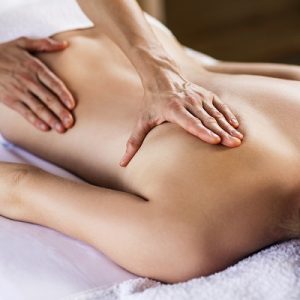 Occasionally referred to as orthopedic massage, clinical massage is an entire array of manipulation techniques designed to assess and then to minister to soft tissue injuries.
Occasionally referred to as orthopedic massage, clinical massage is an entire array of manipulation techniques designed to assess and then to minister to soft tissue injuries.
These may include but are not limited to: massage therapy, trigger point therapy, myofascial release, muscle-energy techniques, craniosacral therapy, deep tissue massage and so on.
Clinical massage therapy is usually based on a physician’s prescription and directives as a series of treatment sessions to be performed over a set period of time and at specified frequency as related only to a specific need.
In that regard, this therapy is most often performed with a particular and purposeful outcome in mind, and its first and foremost objectives are to relieve pain, to increase the range of motion and to help repair and restore soft tissues such as muscles, tendons and ligaments to their normal and healthy functions.
The first of the doctor-prescribed set of sessions is predominantly devoted to assessment or diagnostics of the client’s true condition and with all the data collected an action plan can be formulated:
- By using various levels of palpation or touching of the ailing body part, the massage therapist will pinpoint the exact location as well as determine the levels of pain.
- The range of motion and the strength of the muscles is tested through a sequence of movements such as a passive movement which involves the massage therapist moving the relevant muscle groups while the client is inert; an active movement which involves the client’s own movement of the muscles in questions; and the resisted movement which involves the clients’ movement against a resisting force.
- If clinical data related to previous soft tissue injuries and massage therapy is available, it will be reviewed for comparison to the current situation and the phase of healing will be determined.
- The findings are closely reviewed along with the doctor’s orders and a customized Clinical massage therapy is drawn up.
Most every condition of the soft tissues can benefit from Clinical massage to some extent, but the following list displays dysfunctions which respond most advantageously to its application:
Myofascial Pain
Pain and physiological dysfunctions are known to begin at specific points within muscles and their connective tissues which are also known as fascia. These are appropriately referred to as trigger points because they tend to set off or trigger reactions at remote locations.
Scientists and researchers have successful recorded comprehensive map systems of myofascial trigger points and they have been able to identify dozens of dysfunctions relating to them. The most common of these are: carpal tunnel syndrome, TMJ dysfunction, PMS, headache, diarrhea, dizziness, cardiac arrhythmia, indigestion, tennis elbow, urinary frequency, sinusitis, deafness and blurred vision.
Fascial Plane Dysfunction
Fascia covers nearly the entire body in large endlessly connected sheets which can be distorted and bound to themselves and nearby tissues when inflicted with injury, misalignment or a chemical imbalance. To promote optimal health, the fascial sheets and the blood vessels and nerves which follow them must be in good conditions.
Neuromuscular Dysfunction
Even the simplest and the tiniest of movements of the body requires armies of nerve impulses to be sent to the muscle which is directly involved, as well as to the adjoining and opposing muscles. And it must all be accomplished with precision of timing and proportions. When the mechanics of any part of these functions break down, muscle fibers or entire muscles lock.
Tonus System Dysfunction
Overused muscles become hypertonic or lose their ability to relax. Consequently, they tighten and cause stress on opposing muscles and on the joints they cross.
Dermatomic Dysfunction
When nerves are pinched anywhere along their path, pain will be delivered to the area they serve.
Spondylogenic Dysfunction
When joints of the spine are impaired or compressed, pain will occur in that specific area.
Stated more simply, people suffering from muscle or joint pains or tightness, muscle fatigue or tension, shooting or spreading pains, allergies or asthma, anxiety or depression, irregularity of the digestive system, arthritis or circulatory problems, sleep disorders, headaches, immune function disorders or stress, they can be helped as their symptoms can be relieved through clinical massage.






